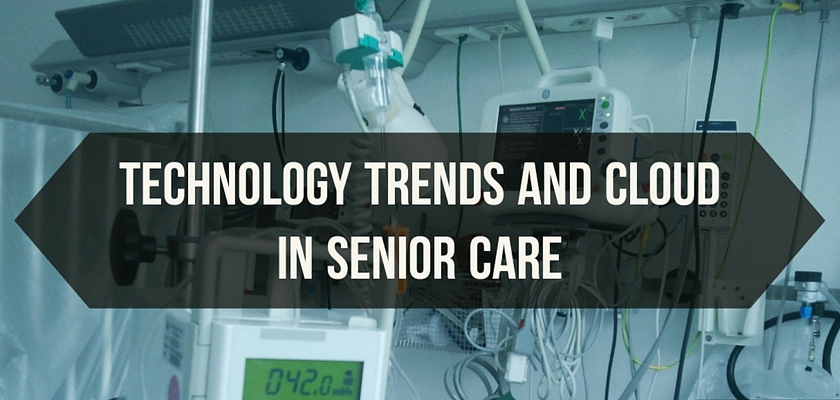With cloud adoption on the rise in the senior care industry, with more than half of US-based senior care providers using the cloud today, it should come as no surprise that technological innovation is starting to seep into many of this industry’s functions. The growing popularity of private cloud solutions in senior care is an indicator of the overall modernization taking place in the industry. In an industry that has historically been slow to innovate, incorporation of new technology is having major impact.

In this article, some of the new and noteworthy innovations taking hold in senior care will be explored. For additional information about cloud use cases for the senior care/long-term, post acute care industry (LTPAC) – see our cloud services for senior care page.
Electronic Health Records in Senior Care
Like the healthcare industry, many senior care providers are starting to adopt electronic health records or EHRs. With their counterparts in healthcare already reaping the benefits of digital medical archiving, senior care is following suit with increased adoption. EHR adoption, as encouraged by Meaningful Use and other modernization initiatives in healthcare, offers a number of benefits including improved quality of care, patient centeredness, efficiency and caregiver mobility. As EHR adoption continues to rise in senior care, senior care facilities can take advantage of these benefits and more.
Patient Monitoring in Senior Care
To capture the magnitude of patient monitoring in the senior care industry – Strategy Analytics predicts that the market is set to grow by more than 600% by 2020. With standards of care rising across the board, additional patient monitoring tools will be utilized to better predict and administer care when needed.
Within the monitoring realm, motion capture sensors can provide insight into patient health and help predict when medical needs may arise.
Additionally, a number of new apps have been introduced to assist with patient monitoring and care administration. One app of note allows caregivers to check in with elders and obtain information about their patients’ wellbeing and current health, including their heart rate.
Advancing beyond person-to-person care, a noteworthy innovation promises to deliver senior care by unconventional means. ASUS has introduced a robot that can help administer care to the elderly, act as a “smart assistant,” send emergency messages to caregivers and family, and safeguard patient health. The gadget is already being used in senior care facilities in Singapore, but with additional development planned for these robots, it’s possible adoption may spread globally.
The Future of Technology in Senior Care
With life expectancy higher than ever before, and an expected 2 billion people over the age of 60 by the year 2050, it’s clear the senior care industry’s recent modernization is born out of necessity. With heightened attention on innovation in this industry it’s hopeful that the introduction of new technology can equip senior care facilities to not only handle the growing influx of patients, but also improve the quality of care.
To learn more about how the cloud can help your senior care facility, visit our senior care page, or request information.


